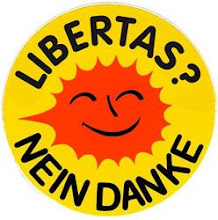The revised EU treaties on a single page
1. European countries agree to establish a European Union so that we can work together where we need to. The treaties set out what is done at the European level and how. They can be changed if everyone agrees.
2. The Union is a partnership based on certain principles: human dignity, freedom, democracy, equality, the rule of law, respect for human rights, and respect for minorities. It aims at promoting peace, its values, and its peoples' well-being. It treats all equally. Specific rights of citizens with respect to the Union are set down in a Charter.
3. It is a Union of the citizens and states of Europe. Its decisions are taken as close as possible to the citizens. It respects its Member States' national identities, and the Member States agree to help each other fulfill the Union's objectives. It works openly.
4. The Union has only the powers the member states give it. Member states act at EU level only when they need to. When they do agree to act at that level, the laws agreed at EU level prevail over member states' individual laws.
5. There is a single market, with free movement across the Union of people, goods, services and capital. The market is subject to rules to make it fair to workers and consumers, and to protect the environment.
6. There will be common action, more in some areas than others, where it makes sense to work together - notably aspects of transport, environment, consumer protection, competition policy, employment, international trade, development aid, illegal immigration, asylum, fighting crime, agriculture and fisheries. In some areas, smaller groups of member states can act together if they choose.
7. Member states co-ordinate their economic policies. There is a single currency, the euro, for those who wish to participate and who meet the conditions.
8. The main institutions of the Union are: a Council with ministers from each member state's government; a European Parliament with MEPs directly elected in each member state; a Commission with a president elected by Parliament, and members nominated by governments and confirmed by Parliament; and a Court with a judge appointed by each member state. There are other advisory and technical bodies. Each institution has a president.
9. The leaders of the member states, meeting in the European Council and acting unanimously, are in charge of the Union's political direction. Acting within their guidance, the Commission proposes EU laws and the Council decides on them, usually by majority vote and jointly with Parliament. Sensitive matters require unanimity in the Council.
10. The Union has a budget which must balance. The budget is set by Parliament and the Council within limits agreed unanimously among the member states.
11. Member states seek to act together in foreign policy, but subject to unanimous agreement. When there is an agreed position, the Union will be represented externally by a Vice-President of the Commission who is the EU's High Representative.
Subscribe to:
Post Comments (Atom)





Clearest summary I've seen!
ReplyDeleteWonderfully clear!
ReplyDelete